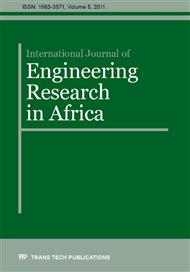[1]
U. Yogeswaran and S.M. Chen, Multi-walled carbon nanotubes with poly (methylene blue) composite fi{TTP}-1279 lm for the enhancement and separation of electroanalytical responses of catecholamine and ascorbic acid. Sensors and Actuators B 130 (2008).
DOI: 10.1016/j.snb.2007.10.040
Google Scholar
[2]
Y. Geng, M.Y. Liu, J. Li, X.M. Shi and J.K. Kim, Effects of surfactant treatment on mechanical and electrical properties of CNT/epoxy nanocomposites. Composites: Part A 39 (2008) 1876–1883.
DOI: 10.1016/j.compositesa.2008.09.009
Google Scholar
[3]
S. Wanga,R. Liang, B. Wang and C. Zhang, Dispersion and thermal conductivity of carbon nanotube composites. J Carbon 47 (2009) 53 –57.
DOI: 10.1016/j.carbon.2008.08.024
Google Scholar
[4]
F.H. Gojny, M.H.G. Wichmann, B. Fiedler and K. Schulte, Infl{TTP}-1278 uence of diff{TTP}-1280 erent carbon nanotubes on the mechanical properties of epoxy matrix composites – A comparative study. Composites Science and Technology 65 (2005).
DOI: 10.1016/j.compscitech.2005.04.021
Google Scholar
[5]
G. Centi, M. Gangeri, M. Fiorello, S. Perathoner, J. Amadou, D Bégin, M.J. Ledoux, C. Pham-Huu, M.E. Schuster, and D.S. Su, The role of mechanically induced defects in carbon nanotubes to modify the properties of electrodes for PEM fuel cell. Catalysis Today 147 (2009).
DOI: 10.1016/j.cattod.2009.07.080
Google Scholar
[6]
D.K. Lim, T. Shibayanagi and A.P. Gerlich, Synthesis of multi-walled CNT reinforced aluminium alloy composite via friction stir processing. Composites Science and Technology 66 (2006) 1995–(2002).
DOI: 10.1016/j.msea.2008.11.067
Google Scholar
[7]
H. Ma, J. Zeng, M. L. Realff{TTP}-1280 , S. Kumar and D. A. Schiraldi, Processing, structure, and properties of fi{TTP}-1279 bers from polyester/carbon nanofi{TTP}-1279 ber composites. Composites Science and Technology 63 (2003) 1617–1628.
DOI: 10.1016/s0266-3538(03)00071-x
Google Scholar
[8]
P.C. Ma, N.A. Siddiqui, G. Marom and J.K. Kim, Dispersion and functionalization of carbon nanotubes for polymer-based nanocomposites: A review. Composites: Part A 41 (2010) 1345–1367.
DOI: 10.1016/j.compositesa.2010.07.003
Google Scholar
[9]
L. Bokobza, Multi wall carbon nanotube elastomeric composites: A review. Polymer 48 (2007) 4907-4920.
DOI: 10.1016/j.polymer.2007.06.046
Google Scholar
[10]
L. Lu, Z. Zhou, Y. Zhang, S. Wang and Y. Zhang, Reinforcement of styrene–butadiene–styrene tri-block copolymer by multi-walled carbon nanotubes via melt mixing. J Carbon 45 (2007) 2621–2627.
DOI: 10.1016/j.carbon.2007.08.025
Google Scholar
[11]
B. Krause, P. Pötschke and L. Häußler, Infl{TTP}-1278 uence of small scale melt mixing conditions on electrical resistivity of carbon nanotube-polyamide composites. Composites Science and Technology 69 (2009) 1505–1515.
DOI: 10.1016/j.compscitech.2008.07.007
Google Scholar
[12]
P.C. Ma, J.K. Kim and B.Z. Tang, Effects of silane functionalization on the properties of carbon nanotube/epoxy nanocomposites. Composites Science and Technology 67 (2007) 2965–2972.
DOI: 10.1016/j.compscitech.2007.05.006
Google Scholar
[13]
S. Ghose, K. Watson, K. Sun, J. Criss, E. Siochi and J. Connell, High temperature resin/carbon nanotube composite fabrication. Composites Science and Technology 66 (2006) 1995–(2002).
DOI: 10.1016/j.compscitech.2006.01.008
Google Scholar
[14]
R. Taherian, A. Nozad-Golikand and M.J. Hadianfard, The effect of mold pressing pressure and composition on properties of nanocomposite bipolar plate for proton exchange membrane fuel cell. Materials and Design 32 (2011) 3883–3892.
DOI: 10.1016/j.matdes.2011.02.059
Google Scholar
[15]
A.P. Kumara, D. Depana, N.S. Tomerb and R.P. Singh, Nanoscale particles for polymer degradation and stabilization—Trendsand future perspectives. Progress in Polymer Science 34 (2009) 479–515.
DOI: 10.1016/j.progpolymsci.2009.01.002
Google Scholar
[16]
J. Xiong, Z. Zheng, W. Song, D. Zhou and X. Wang, Microstructure and properties of polyurethane nanocomposites reinforced with methylene-bis-ortho-chloroanilline-grafted multi-walled carbon nanotubes. Composites: Part A 39 (2008) 904–910.
DOI: 10.1016/j.compositesa.2007.12.008
Google Scholar
[17]
Y.K. Lee, D.J. Kim, H.J. Kim, T.S. Hwang, M. Rafailovich and J. Sokolov, Activation Energy and Curing Behavior of Resol- and Novolac-Type Phenolic Resins by Differential Scanning Calorimetry and Thermogravimetric Analysis. Journal of Applied Polymer Science 89 (2003).
DOI: 10.1002/app.12340
Google Scholar
[18]
F.H. Su, Z.Z. Zhang, F. Guo, X.H. Men and W.M. Liu, Friction and wear properties of fabric/phenolic composites with plasma treated-hybrid glass/PTFE fabric. Composites Science and Technology 67 (2007) 981–988.
DOI: 10.1016/j.compscitech.2006.06.010
Google Scholar
[19]
N. Pierard, Ball milling effect on the structure of single-wall carbon nanotubes. Carbon 42 (2004) 1691–1697.
DOI: 10.1016/j.carbon.2004.02.031
Google Scholar
[20]
Y. Pan, L. Li, S.H. Chan and J. Zhao, Correlation between dispersion state and electrical conductivity of MWNTs/PP composites prepared by melt blending. Composites: Part A 41 (2010) 419–426.
DOI: 10.1016/j.compositesa.2009.11.009
Google Scholar
[21]
V. Datsyuk, M. Kalyva, K. Papagelis, J. Parthenios, D. Tasis, A. Siokou, I. Kallitsis and C. Galiotis, Chemical oxidation of multiwalled carbon nanotubes. Carbon 46 (2008) 833-840.
DOI: 10.1016/j.carbon.2008.02.012
Google Scholar
[22]
P.V. Kodgire, A.R. Bhattacharyya, S. Bose, N. Gupta, A.R. Kulkarni and A. Misra. Control of multiwall carbon nanotubes dispersion in polyamide6 matrix: An assessment through electrical conductivity. Chemical Physics Letters 432 (2006) 480–485.
DOI: 10.1016/j.cplett.2006.10.088
Google Scholar
[23]
H. Ma, Effect of elastomeric nanoparticles on properties of phenolic resin. Polymer 46 (2005) 10568–10573.
DOI: 10.1016/j.polymer.2005.07.103
Google Scholar
[24]
G. Wu, Y. Tang and R. Weng, Dispersion of nano-carbon fi{TTP}-1279 lled polyimide composites using self-degradated low molecular poly(amic acid) as impurity-free dispersant. Polymer Degradation and Stability 95 (2010) 1449-1455.
DOI: 10.1016/j.polymdegradstab.2010.06.026
Google Scholar
[25]
Y.A. Kim, T. Hayashi, Y. Fukai, M. Endo, T. Yanagisawa and M.S. Dresselhaus, Effect of ball milling on morphology of cup-stacked carbon Nanotubes. Chemical Physics Letters 355 (2002) 279–284.
DOI: 10.1016/s0009-2614(02)00248-8
Google Scholar
[26]
H. Yurdakul, A.T. Seyhan, S. Turan, M. Tanoglu, W. Bauhofer and K. Schulte, Electric field effects on CNTs/vinyl ester suspensions and the resulting electrical and thermal composite properties. Composites Science and Technology 70 (2010).
DOI: 10.1016/j.compscitech.2010.08.007
Google Scholar
[27]
M.H. Al-Saleh and U. Sundararaj, A review of vapor grown carbon nanofi{TTP}-1279 ber/polymer conductive composites. Carbon 47 (2009) 2-22.
DOI: 10.1016/j.carbon.2008.09.039
Google Scholar


